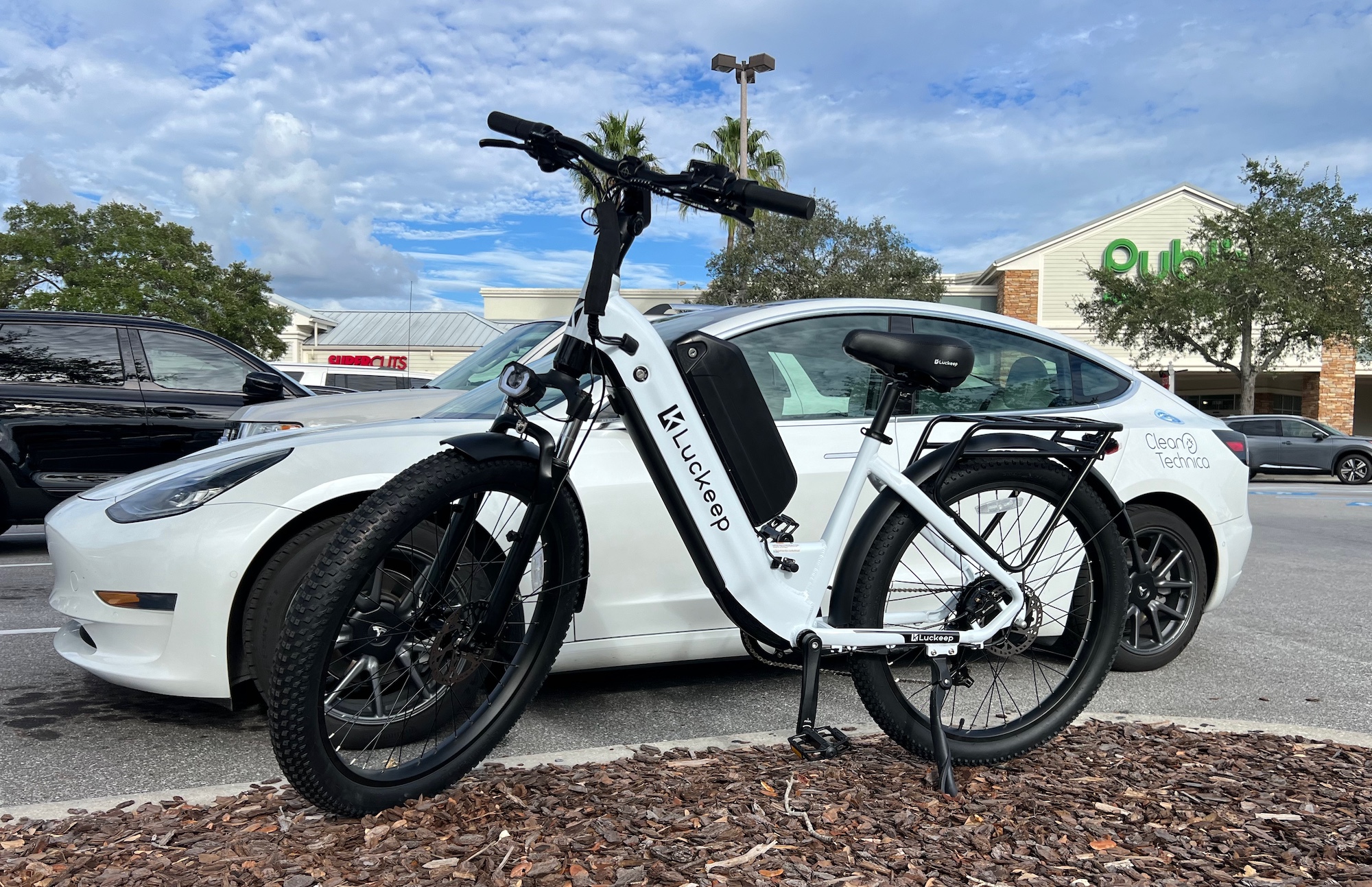This month the United Auto Workers (UAW) announced that its members ratified new contracts with Ford, Stellantis, and General Motors. The result has been 25% or more raises over the next 4.5 years. Not only is this one of US labor’s biggest achievements in decades, it’s a real win for EVs.
The mass adoption of EVs had the UAW worried. The union recognized that the auto industry was confronting a redefining and disruptive moment with the technological shift inherent in EVs. Whether the automakers would see it as an opportunity to re-invest in US manufacturing, or if they would they rationalize it as a money-grabbing, labor-suppressing excuse, was uncertain.
It was clear that a future in which automakers imported components, outsourced to low-road suppliers, and underpaid workers was a real threat.
In a 2020 white paper, the UAW established its position: “In order to preserve American jobs and work standards, what is needed is a proactive industrial policy that creates high-quality manufacturing jobs making EVs and their components.” That statement became the underlying mantra for contract negotiations focusing on what came to be known as a Fair EV Future.
“Strong environmental standards can be structured as a win-win for the environment, workers, and the economy,” the authors stated, inviting a larger vision of mitigating climate pollution while also protecting US workers. “Environmental policy should be used to address climate change while also promoting investment in future technologies that create quality jobs in the process.”
The UAW efforts rose in momentum and force due to precisely planned organizing and strike activity. Then other workplace unions joined in, and, by summer, 2023, a roiling wave of more than 353,000 US workers had walked off the job to demand higher wages. That included 170,000 Hollywood actors and screenwriters — the largest work stoppage since 1997.
The contract negotiations were not held in a vacuum. Rather, the UAW sees EVs as much more than a shift in consumer preference: they have become a “fundamental shift in the way we power vehicles.” Because EV powertrains are mechanically simpler than internal combustion engine (ICE) powertrains, they have the potential to reduce the amount of labor associated with vehicle production and tangentially “erode employment in ICE engines, transmissions, exhaust systems, and fuel systems, but could create employment in batteries, electric motors, electronics, thermal systems, braking systems, and semiconductors.”
Among the UAW demands were reframing worker wages, which had not kept up with inflation. The new contracts restored periodic cost-of-living wage adjustments to offset inflation and also forced agreements to reopen a large Stellantis factory in Belvidere, IL. As a result, instead of a downward spiral in which plant closings would devastate whole communities, good manufacturing jobs within the EV industry could restabilize the automotive workforce.
Win for EVs, Win for the Biden Administration
The UAW efforts have not stopped with the Detroit Three contract wins, however.
President Joe Biden became the first sitting US president to joined a picket line in support of the UAW. He praised the agreements, expressing satisfaction that terms would propel other, non-unionized automakers to follow suit and raise wages. Biden noted, “These contracts show that when unions do well, it lifts all workers. Following the UAW’s historic agreements, we’ve seen Toyota, Honda, Hyundai, and Subaru announce significant wage increases as well. The UAW is fighting hard to ensure that all auto jobs are good, middle-class jobs — and I stand with them in that fight.”
UAW efforts have paralleled Biden’s perspective that building the economy from the “bottom up and the middle out” raises all boats on the proverbial tide. These wins for EVs come at a time in which an enormous disparity between the salaries of CEOs and ordinary workers continues to plague the economy. The President can piggyback on the UAW successes, reminding constituents that he is the most pro-union president in history and implying that increases in workers’ take-home pay are indicative of Bidenomics.
Jennifer Rubin of the Washington Post agrees that these UAW contracts are a sign that the US economy that is in a far better state than public perceptions suggest. “Maybe it is time to recognize the strength of the country’s economic recovery and some signs (in part due to labor contracts),” Rubin says, “that prosperity might be shared more widely than it has been in the past.”
Shawn Fain, UAW president who led the historic quest for new autoworker contracts, concurred with President Biden that the agreements with the Detroit Three address only partial victories. “The Stand Up Strike was just the beginning,” Fain said in a statement. “Now, we take our strike muscle and our fighting spirit to the rest of the industries we represent and to millions of nonunion workers ready to stand up and fight for a better way of life.”
UAW Worker Advocacy Tied to Wins for EVs
With projections for the EV industry to gain 50% of the market by 2040, the UAW has designed its continuing worker advocacy around keen knowledge of the ways that EV growth will be driven. This recognition is a real win for EVs.
- Cost Competitiveness: Cost concerns should dissipate as the price of batteries declines, making EVs become even more price competitive when fuel and maintenance savings are considered. By 2030, EV powertrains are expected to reach price parity with internal combustion engine (ICE) powertrains.
- Major Actors Investing in EVs: Automotive companies, suppliers, governments, and investors all see EVs as an opportunity and are setting ambitious EV targets. Moreover, they’re backing them up with pledges of massive investments.
- Complements Mobility Trends: EVs will be aided by the growth of ride hailing and autonomous vehicles (AVs). EV fuel and maintenance savings are best realized with highly utilized fleet vehicles and EVs provide the greater power and energy storage necessary for AVs.
- Government Mandates: EV growth, as boosted by government support like consumer subsidies or infrastructure investment, can support global governments goals to cut emissions and transition to EVs, with some voices calling for phasing out ICE vehicles entirely.
Vehicle electrification requires building a charging infrastructure for drivers, the UAW says, which means “upgrading our energy infrastructure to meet electricity demand and ensure electricity production is as green as the EVs themselves.” This is another opportunity to create quality jobs to build, install, and maintain EV infrastructure.



